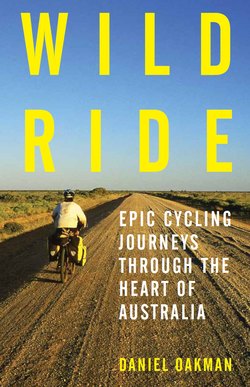Читать книгу Wild Ride - Daniel Oakman - Страница 8
На сайте Литреса книга снята с продажи.
ОглавлениеBorn in 1860 at Wolumla, near Eden on the far south coast of New South Wales, Sarah grew up on a dairy farm. By 1890 she had married, moved to Sydney and had three children. With Ernest’s encouragement, she learned to ride a bicycle in 1893, at the age of thirty-three. Although blind in one eye — the result of a childhood accident — Sarah was undaunted. Limited peripheral vision and impaired depth perception presented no barrier to her cycling ambitions. After just a few months, she accompanied her husband on the 483-kilometre ride to Bega, averaging nearly 100 kilometres a day. Reported as the first long-distance ride by an Australian woman, it started her lifelong passion for bicycle touring.
More than double the distance of the Bega trip, her Sydney-to-Melbourne ride attracted far more attention. Commentators celebrated Sarah’s effort as the longest ride undertaken by a woman, not just in Australia but in the world. The second claim is debatable, but such was the enthusiasm for her achievement that this trifling detail barely mattered. She was a trailblazer, an inspiration. And she was ours.
Like all heroes and heroines, Sarah Maddock made the impossible look effortless. Journalists and readers alike revelled in the details. She conquered miles of mountains, swamps and sandy plains, forded creeks, battled headwinds and overcame bureaucratic obstacles at the intercolonial border. On good roads near Kilmore, she easily outpaced a ‘wild bull’ keen to inspect her bicycle.
Entering the outskirts of Melbourne on a Saturday afternoon, Ernest and Sarah accidentally found themselves caught up in the finish of an inter-club cycling race. The crowd of spectators, expecting a field of burly blokes to sprint over the finishing line, were treated instead to the sight of an ‘engaging little lady in ordinary walking dress’ who pulled up ‘looking as fresh as when she stepped out of her drawing room in Sydney’. As the couple left for the city centre, the assembled racing fans gave Sarah a hearty cheer. A few miles down the road, they were met by members of the Melbourne Bicycle Club who escorted them over the final stage of their journey.
Much attention was devoted to Sarah’s clothes. Too much attention for her liking, but it was a sign of the times. The sight of a woman riding a bicycle could still provoke heated debate, although the temperature of the controversy had lowered somewhat by the mid 1890s. Nevertheless, questions and concerns still circulated about the effects of bike riding on a woman’s fertility, her physical health and her chastity. When women took to the wheel, they were suddenly part of the street: free, fast and unchaperoned. Goodness knows what they would get up to.
